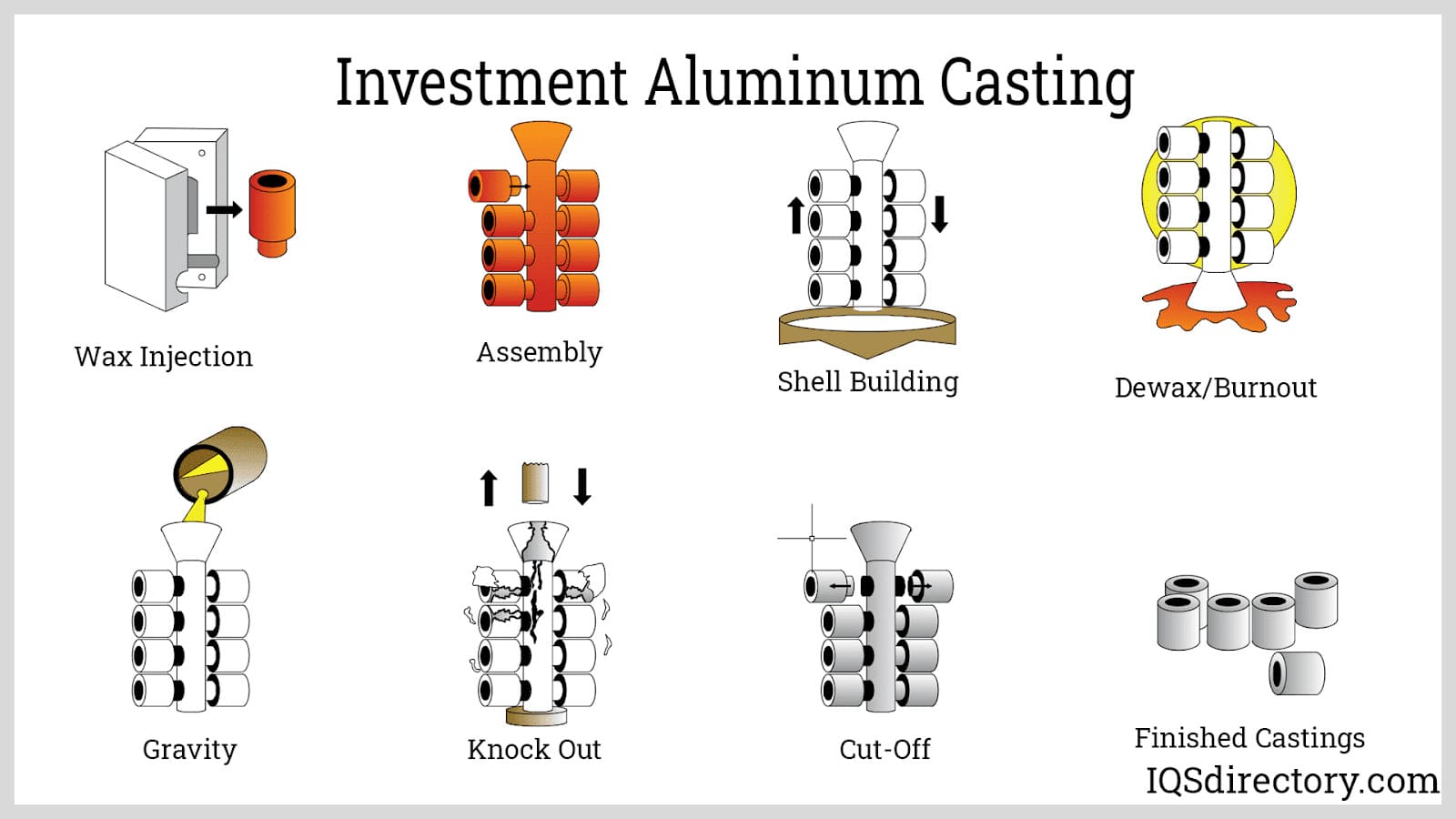The Definitive Guide to Alcast Company
The Definitive Guide to Alcast Company
Blog Article
8 Easy Facts About Alcast Company Described
Table of ContentsThe 6-Second Trick For Alcast CompanyAlcast Company - TruthsWhat Does Alcast Company Do?Alcast Company Can Be Fun For AnyoneAlcast Company Things To Know Before You Get ThisHow Alcast Company can Save You Time, Stress, and Money.
Chemical Comparison of Cast Aluminum Alloys Silicon promotes castability by decreasing the alloy's melting temperature and enhancing fluidity throughout casting. Additionally, silicon contributes to the alloy's toughness and put on resistance, making it useful in applications where resilience is critical, such as auto parts and engine elements.It likewise improves the machinability of the alloy, making it much easier to refine right into completed products. This way, iron adds to the general workability of aluminum alloys. Copper boosts electrical conductivity, making it advantageous in electric applications. It likewise improves corrosion resistance and contributes to the alloy's general stamina.
Manganese adds to the toughness of light weight aluminum alloys and enhances workability (aluminum foundry). It is generally made use of in wrought light weight aluminum products like sheets, extrusions, and profiles. The visibility of manganese help in the alloy's formability and resistance to splitting during construction procedures. Magnesium is a lightweight aspect that offers stamina and impact resistance to light weight aluminum alloys.
Alcast Company Fundamentals Explained
It enables the manufacturing of lightweight parts with excellent mechanical homes. Zinc boosts the castability of aluminum alloys and helps control the solidification procedure during spreading. It boosts the alloy's toughness and hardness. It is typically located in applications where elaborate shapes and fine details are needed, such as attractive spreadings and certain vehicle components.

The primary thermal conductivity, tensile stamina, yield stamina, and prolongation differ. Among the above alloys, A356 has the greatest thermal conductivity, and A380 and ADC12 have the lowest.
Getting My Alcast Company To Work

In accuracy casting, 6063 is appropriate for applications where complex geometries and top notch surface finishes are vital. Examples consist of telecommunication enclosures, where the alloy's exceptional formability permits streamlined and cosmetically pleasing layouts while preserving structural stability. In the Illumination Solutions sector, precision-cast 6063 components create classy and efficient illumination components that need complex forms and excellent thermal efficiency.
The A360 displays remarkable elongation, making it optimal for facility and thin-walled elements. In precision casting applications, A360 is well-suited for industries such as Customer Electronic Devices, Telecommunication, and Power Devices.
Some Known Factual Statements About Alcast Company
Its unique buildings make A360 an important option for accuracy spreading in these markets, boosting item durability view it and quality. Casting Foundry. Light weight aluminum alloy 380, or A380, is a commonly utilized casting alloy with several distinctive qualities.
In precision spreading, light weight aluminum 413 radiates in the Consumer Electronics and Power Devices markets. This alloy's remarkable deterioration resistance makes it an exceptional choice for exterior applications, ensuring long-lasting, sturdy products in the stated markets.
Alcast Company Things To Know Before You Get This
When you have actually decided that the light weight aluminum die casting procedure appropriates for your project, an essential following action is picking one of the most appropriate alloy. The light weight aluminum alloy you choose will substantially influence both the casting process and the properties of the end product. As a result of this, you must make your decision meticulously and take an enlightened method.
Establishing the most suitable aluminum alloy for your application will imply considering a vast array of qualities. The initial group addresses alloy qualities that impact the production procedure.
The 10-Minute Rule for Alcast Company
The alloy you choose for die spreading directly impacts several facets of the casting process, like how very easy the alloy is to work with and if it is prone to casting issues. Hot fracturing, likewise referred to as solidification cracking, is a regular die casting flaw for aluminum alloys that can cause interior or surface-level splits or cracks.
Certain aluminum alloys are a lot more prone to hot splitting than others, and your option needs to consider this. It can harm both the cast and the die, so you ought to look for alloys with high anti-soldering buildings.
Deterioration resistance, which is currently a noteworthy quality of light weight aluminum, can differ substantially from alloy to alloy and is an important characteristic to think about depending upon the ecological problems your item will certainly be subjected to (Foundry). Use resistance is one more property typically sought in aluminum items and can separate some alloys
Report this page